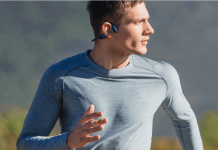Individuals who begin running for the first time may notice changes in their body composition (which includes their muscles) and energy levels (which includes their metabolism).
If you’ve just recently begun jogging and have yet to notice the effects, persevere! You may be surprised after a while at how often your body transforms after you start running.
Changes in the body due to running
Although beginners notice the most dramatic changes in their bodies, even experienced runners could thrive from frequent jogging. Running a different route or altering your nutrition may provide surprising consequences.
Continue reading to learn more about what changes occur in your body once you begin running daily.
Improved Resistance to harm
As a beginning runner, you might find that you might only run a few kilometers before fainting. Although, if you persist for several weeks, you will see a difference.
Within three to four weeks, you should just be able to run far more than you were when you initially began. This ensures you can run for a longer period (and at a quicker pace) before your muscles and lungs begin to feel the strain of the excessive exercise.
Improved metabolic rate
Not only does your physical look alter as you increase your activity level, but so does your emotional and psychological condition. Your immune system, cardiovascular, and digestive systems all improve as your body’s capabilities keep improving.
You could assume that your metabolic activity will get more efficient and faster in the future. As a consequence, your body will begin to generate more energy from the food it now uses. To obtain an original essay on the very same topic or any other theme from a professional, WritingUniverse has covered you up with the situation. You can utilize the service to obtain a reliable article. Since your body digests food more rapidly on a calorie-restricted diet, you might anticipate feeling more stimulated.
Fat loss
Physical exercise burns calories. Though this may seem to be an abstract concept, it is not. When we talk about burning calories, we are referring to the process of consuming energy and burning fats from the body.
When you run, the very first thing your body consumes is the glycogen stored in your muscles. Whatever you consume contributes to the replenishment of these stores. Nonetheless, if you’ve depleted it completely, the rest of the exercise will be powered by your fat cells. This is the point at which the genuine fat-burning process begins!
Jogging on an empty stomach increases your ability to burn fat. A duration of at least eight hours without eating or drinking is considered an “empty stomach.” Additionally referred to as operating on little or no nourishment. This is best done in the morning time. Following a couple of weeks of consistent workouts. This results in fat loss in places such as the biceps, back, and cheeks. This will also work if you are in a caloric deficit.
Maintaining Balance and Posture
If you run with good technique, your body might start developing perfect posture. Once you’re leaned over, it’s impossible to run efficiently.
This is an excellent tool for those who spend most of their working hours before a laptop. Running, jogging, and other athletic activities reveal the importance of sports in education, as students who take part in sports activities are more effective and efficient as compared to students who are not interested in such activities. Thus, sports are of great importance in education and other fields of life.
Stimulates the bones development
Running is a weight-bearing exercise. Even though this raises your chance of joint injury as a result of a collision, it also improves your skeleton. Running consistently may have a major effect on bone strength or thickness.
This is particularly crucial for older runners. Running might help you prevent bone loss and degradation as you age, enabling you to retain your endurance for a longer period.
Healthier Cholesterol level
Regular exercise, even at a modest intensity, may help decrease bad cholesterol and boost good cholesterol. This decreases the chance of heart disease while increasing your cardiovascular endurance.
Improve thighs
Running puts your leg muscles through its paces. Once you run, your knees are in charge of sustaining the bulk of your body’s weight. When you’re running downhill, it’s stressful for them.
Jogging with a quad-dominant style is rather prevalent, especially among newcomers. It may not seem like a concern at first (in fact, it may improve the tone of the thighs), but it may cause knee instability and cause serious injuries over time.
Conclusion
Running is an excellent way to get some fitness, get outside, and explore new areas in your neighborhood. You just need a good pair of running shoes and a little motivation to go for a run since the required equipment is modest. If you practice proper diet, drink, and recovery while running, you’ll quickly experience the natural high and improve your fitness.
About Author
Joanne Elliot is a blogger, podcaster, and athlete in addition to other endeavors. The author encourages readers to dream big and train their minds to recover more quickly from sports-related injuries.






























